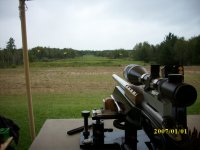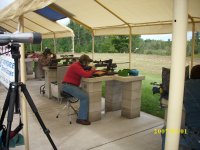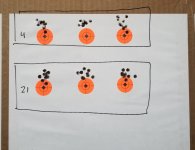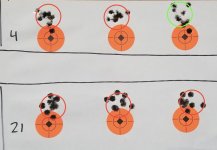So I bought a Kinetic Security Solutions adaptive tuner system around a year ago as I was primarily shooting factory ammo and it seemed like it would allow me to tune my rifle to shoot factory ammo. After a frustrating range day of trying to interpret two shot "groups" without seeing any benefits I took it off and forgot about it.
After reading the last bit of this thread I figured I'd put it on and do some "testing". I recently put together a .223 trainer and am just shooting handloads that I share with my AR. So again this should be an excellent tool to tune my rifle to a load.
Load data:
75gr hornady hpbt seated to 2.25" or so
21.7gr h322 measured by volume
Assorted brass.
Rifle:
ARC Archimedes
PVA prefit
KMW Sentinel Stock
I had been shooting it bare muzzle and used a .338 Sidwinder brake I had lying around to mount the tuner.
I shot a few rounds to adjust the POI to be slightly high and went into the tuner adjustment test as outlined here:
PATENTED KINETIC SECURITY SOLUTIONS - ADAPTIVE TUNING SYSTEM INSTALLATION & TUNING - PLEASE READ NOTE: If you install 3 set screws, the unit will be more likely to vibrate loose. ONLY USE 1 SET SCREW! - One (1) spare set screw has been provided. Prior to installing the...
www.kineticsecuritysolutions.com
View attachment 7827072
Tuner settings are written below the targets.
I picked the first setting 4 as my "best" as it "grouped nicely" and seemed to be in the middle of a "node" with similar POI. I used 21 as my "worst" setting as both 20 and 22 "grouped poorly" and seemed to have some different in POI.
I then shot 6, 5 shot groups. 2 groups per target (essentially 10 shot group). All of setting 4 was shot first and setting 21 shot next.
View attachment 7827076
I then removed the tuner and did the same with just the brake. I did make a zero correction on my last target to zero as I think I will leave it on there considering how fun it was to shoot with no recoil.
View attachment 7827088
Make of this what you will. The tuner will be moving along out of my life.






